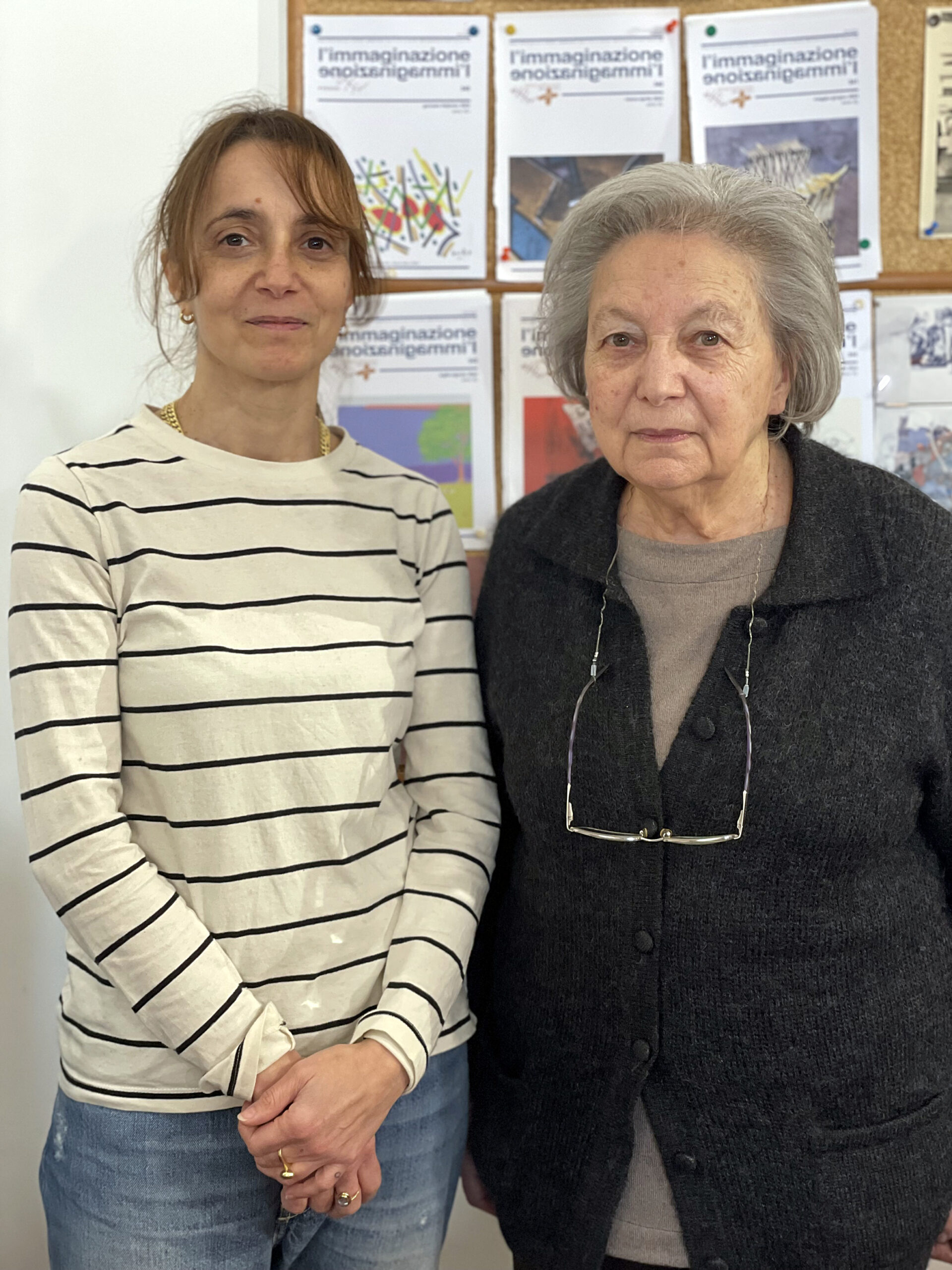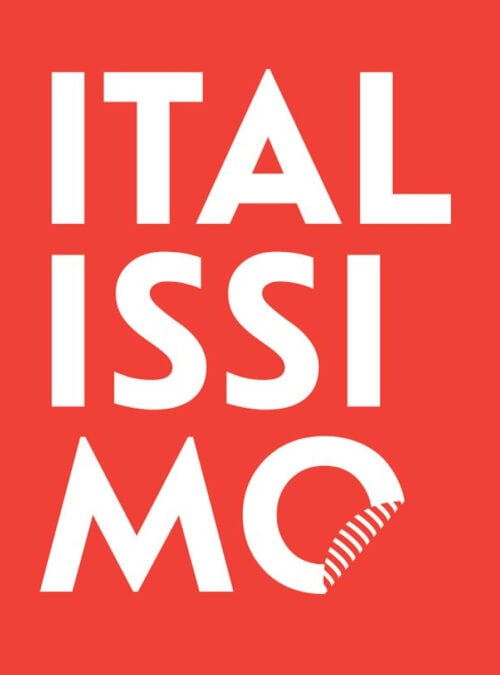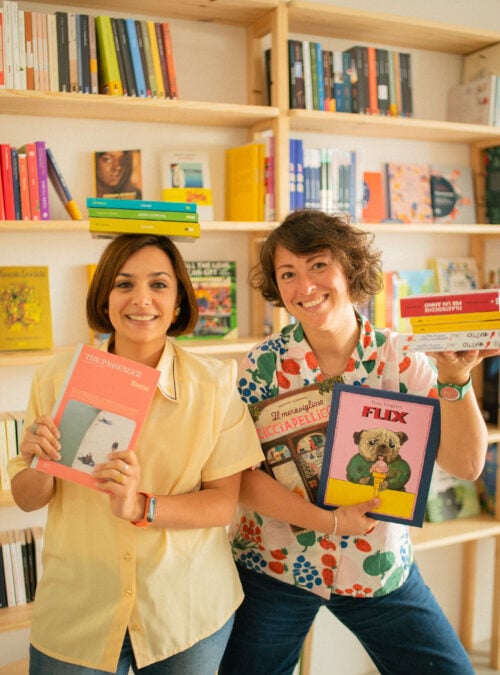Interview with Anna Grazia D’Oria and Agnese Manni (publishing house Manni)
Author: Laura Pugno

How would you describe the identity of the publishing house Manni to the readers of newitalianbooks abroad?
Anna Grazia D’Oria
The commitment/passion to working in the cultural field has always been there, for Piero Manni and me, after 1968 and the years of militant politics, as teachers, collaborators of newspapers and magazines and for Piero also with a small publisher from Salento. Then came the turning point in 1984, when we started the magazine l’immaginazione (The Imagination) based in our home and immediately afterwards with the publication of our first book of poetry, Segni di poesia lingua di pace, with unpublished texts by twenty well-known Italian authors, including Giorgio Caproni, Biancamaria Frabotta, Mario Luzi, Luigi Malerba, Elio Pagliarani, Amelia Rosselli, Edoardo Sanguineti, Paolo Volponi, and Andrea Zanzotto.
After a few issues of the magazine that were quite anchored to the territory, a long discussion with Franco Fortini influenced our choice to free the scolopendra of Klee’s painting depicted in the masthead from the fence, with the desire to give this earth animal the opportunity to walk beyond its borders. And immediately there was a magazine issue dedicated to Aldo Palazzeschi, which was well received in the national cultural pages, and for the publishing house we were immediately supported by prominent intellectuals with their advice and their titles in the catalogue.
‘Small is beautiful’, the press wrote at the time about our initiative, but the problems related to distribution and relationships were great, working in a peripheral setting in a Salento that was far from being well-known as a tourist destination.
We tried to overcome these difficulties, keeping our feet firmly planted in the territory and looking towards broader horizons.
Since 2003, the publishing house has been based in a former tobacco factory in San Cesario, on the outskirts of Lecce (with a small branch in Milan), and has over 2000 titles in its catalogue, a production that is always attentive to poetry and fiction, with a significant shelf of investigative non-fiction, and children’s literature linked to social issues; it has won important awards (I recall the Cinquina of Strega Prize, in 2017, with Un’educazione milanese by Alberto Rollo).
Basically, as Piero Manni wrote in 2014 when republishing Segni di poesia lingua di pace, 40 years ago as today, there is ‘great faith in the power of ideas and words’.
What are its characteristics and strengths?
Agnese Manni
For me there is a key theme in Manni’s history and catalogue, which is that of militancy, of civil commitment. The publishing house was founded with ties to Gruppo 63, and therefore to the idea that literature can have an impact on civil society and contribute to debate and action. This is the leitmotif that continues to inform our choices, whether it’s poetry and fiction, or current affairs reporting, books about the Resistance for children, or titles about gender issues.
I believe that the strong point – at least of a part of the catalogue, but certainly a very characteristic part – is that of trying to investigate situations of fragility, of having a political view of what surrounds us. At this point I’d like to mention a book published in March 2025, Poveri homini by Luigi Malerba, a script based on the diary of a 16th century country priest, which is an exceptional document of history from the base; Gino Ruozzi writes in the Introduction that for Malerba the ‘poor man’ is ‘a literary, cultural, material, entrepreneurial project. It is the indication of a social part with which to affirm and share a process of emancipation’. I think that for Manni too, that is the project to aim for.
Another key strength now lies in its longevity: a rich and extensive catalogue, along with activities linked to the publishing house, which in May 2022 earned a significant recognition. The Manni Publishing House Archive and Library—along with the founders’ personal archives—were declared of ‘Particularly Important Historical Interest’ by the Ministry of Culture. As a result, three Italian universities are currently engaged in cataloguing and digitising this valuable material.
Which literary and other ventures have been most successful in Italy and possibly in other countries, and in your opinion, why is this?
Agnese Manni
On the national market, our best sellers include the poems of Merini, and also the biography written about her by her daughter Emanuela Carniti; there are books about the Resistance written for children by Tina Anselmi and Lidia Menapace; Il bambino che non voleva andare a scuola (The child who didn’t want to go to school) by Ugo Foà, a book for children about the fascist racial laws; Che dice la pioggerellina di marzo (What the March Drizzle Says), a collection of poems from school books from the 1950s; Insegnare la letteratura oggi (Teaching Literature Today) by Romano Luperini, on the theory and teaching of literature; Un’educazione milanese (A Milanese Education) by Alberto Rollo, self-exploration writing; there is Mafie del mio Stivale (Mafias of My Boot) by Enzo Ciconte, on the history of organised crime; Andreotti Il papa nero, an anti-biography of the Italian politician written by Michele Gambino; L’armonia delle donne by Trotula de’ Ruggiero, a woman doctor who founded gender-based medicine in the Middle Ages; Manualetto del candidato by Cicero, a book on how to win elections that seems to talk about Italian and international politics today.
Abroad, titles that I find very constitutive of our identity have been successful: those by Edoardo Sanguineti, the story of manifesto by Valentino Parlato, the beautiful novel by Marosia Castaldi La fame delle donne, and Mio figlio in rosa by Camilla Vivian about young transgender people.
I believe that each of these books has met a specific need, a public that was waiting for it – and this is the challenge for every publisher: to be able to tell something that has not yet been told, or has not been told in the right way.










